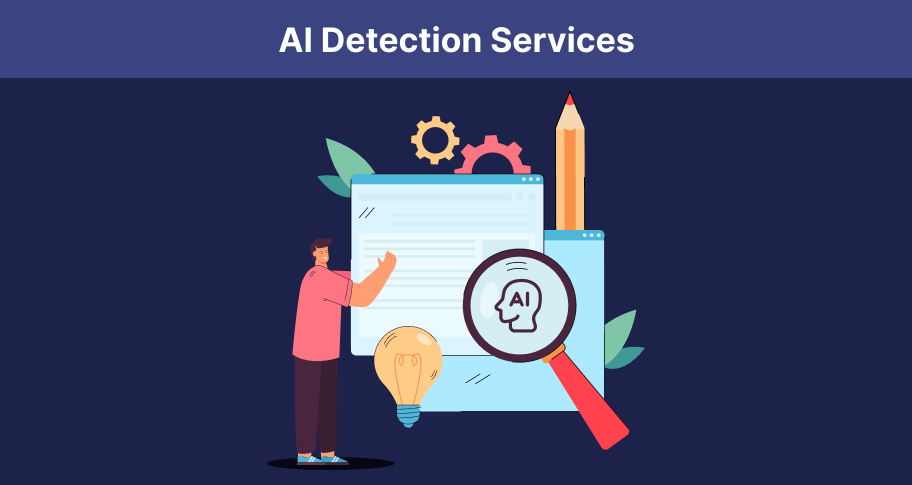October 13, 2024
By now, it’s a sure thing you’ve briefly experimented with one of the AI writing tools such as ChatGPT and didn’t like the results, or you’ve come to heavily rely on these services for many routine tasks in your daily life. Either way, you may not be getting the most out of what AI has to offer everyone, most especially students who are confronted with laborious writing assignments and suspicious faculty who are increasingly on the lookout for AI-generated papers.
If you’ve used these services and still need a real-live, experienced human academic writer to help in editing a final version of your assignment, contact us today. In the meantime, here are some tips for students on how to use AI services such as ChatGPT and others appropriately and effectively without fear of being accused of academic dishonesty.
Advice for Students about Using AI
Use AI for Outlining
How: Ask the AI to help structure your essay, report, or project by generating an outline.
Tip: Provide a clear topic or question, and specify the sections you need help organizing (e.g., introduction, body paragraphs, conclusion). Students will find that this is one of the best uses for these services since it provides the organization of your paper as well as some good ideas on what to include.
Example Prompt:
“Can you create a detailed outline for an essay on the causes and effects of climate change, including sections for an introduction, three body paragraphs, and a conclusion?”
Idea Brainstorming
How: Use AI to brainstorm ideas or explore different perspectives on a topic.
Tip: Be specific about the subject and ask for multiple angles or viewpoints. This can help kickstart the research process. This is an especially useful resource when you’re staring at a blank page on your computer and drawing a blank about where to start or what to say (we’ve all been there).
Example Prompt:
“What are some innovative solutions to reduce plastic pollution in the ocean?”
Clarifying Concepts
How: Ask AI to explain difficult or complex topics in simple terms.
Tip: You can also request the AI to compare and contrast different theories or ideas to deepen understanding. Use this research strategy with caution, though, since ChatGPT et al. will just make things up if they aren’t sure.
Example Prompt:
“Can you explain the difference between Keynesian and classical economics in simple terms?”
Generate Initial Drafts or Passages
How: AI can help with generating draft paragraphs or passages on specific points.
Tip: Use these drafts as starting points—never submit AI-generated content directly. It’s crucial to revise and incorporate your own analysis and voice. Besides, these resources are a wealth of ideas about crafting your own final version of an assignment.
Example Prompt:
“Write a paragraph on the impact of social media on mental health.”
Use AI for Research Guidance
How: Ask for tips on what kind of sources to look for and how to approach research on specific topics.
Tip: While AI can suggest topics and approaches, always ensure that you independently verify and use peer-reviewed sources for academic work. This approach will also produce comparatively dated resources unless you subscribe to a premium version (this is not really necessary for most students, especially those on a budget).
Example Prompt:
“What primary sources would be useful for a paper on the civil rights movement?”
Proofreading and Revising
How: Use AI to proofread your work for grammar and style improvements.
Tip: Ask for suggestions on improving clarity, coherence, and structure rather than expecting perfect grammar corrections. Don’t be surprised if you receive some mixed advice; AI doesn’t like deviation from standard structure which may dampen creativity.
Example Prompt:
“Can you review this paragraph for grammatical errors and clarity?”
Avoid Using AI for Full Assignments
Why: AI is a tool, not a shortcut. Using AI to fully complete essays or assignments without your own input can violate academic integrity policies.
Tip: Focus on using AI to enhance your critical thinking, writing, and research skills rather than replacing them.
By using AI in these ways, students can optimize its potential while maintaining academic honesty and developing their skills effectively.

AI Detection Services: What They Do – and Don’t Do
Many instructors haven’t yet had a chance to learn how Turnitin’s AI reports work, which is different from the plagiarism reports the software has offered for years. With AI, a detector doesn’t have any “evidence” — just a hunch based on some statistical patterns. Some well-known AI scientists argue that the error rate in AI detectors means they just shouldn’t be allowed. These tools should be banned. Part of education is learning to advocate for yourself. Explain how you either didn’t use AI at all or only used it within the terms that was permitted for the course. — Geoffrey A. Fowler, The Washington Post (August 2023)
AI detection services aim to differentiate between human-written and AI-generated text by analyzing various linguistic features and patterns. These systems typically employ machine learning algorithms trained on large datasets of both human and AI-generated content. They look for telltale signs of machine-generated text, such as unusual word choices, repetitive phrasing, overly consistent writing styles, or statistically improbable language patterns. Some advanced detectors may also analyze factors like sentence structure complexity, coherence across paragraphs, and contextual relevance.
View 120,000+ High Quality Academic Documents
Learn-by-example to improve your academic writing
These services, though, face significant limitations. As AI language models become more sophisticated, they produce text that increasingly resembles human writing, making detection more challenging. More importantly, AI-generated content can vary widely in quality and style, depending on the model and prompts used, which can confound detection algorithms. False positives are a persistent issue, as some human writers may naturally exhibit writing patterns that resemble AI-generated text. Conversely, well-crafted AI outputs may slip past detectors.
The effectiveness of these services can also be influenced by the length of the text, with shorter samples being harder to accurately classify. Furthermore, as AI models are constantly evolving, detection services must continually update their algorithms to keep pace, creating a perpetual cat-and-mouse game between generation and detection technologies. AI detection software is far from foolproof—in fact, it has high error rates and can lead instructors to falsely accuse students of misconduct.
OpenAI, the company behind ChatGPT, even shut down their own AI detection software because of its poor accuracy. Indeed, even a small “false positive” error rate means some students could be wrongly accused, an experience with potentially devastating long-term effects. As tempting as it is to rely on AI tools to detect AI-generated writing, evidence so far has shown that they are not reliable. Due to false positives, AI writing detectors such as GPTZero, ZeroGPT, and OpenAI’s Text Classifier cannot be trusted to detect text composed by large language models (LLMs) like ChatGPT. In fact, one AI detection service analyzed the U.S. Constitution and concluded that it was 100% AI generated!
False positives in AI detection services can have severe implications for innocent students wrongly accused of using AI in their academic work. These students may face accusations of cheating or plagiarism, leading to disciplinary actions, grade penalties, and potential long-term consequences such as suspension or expulsion. The psychological impact can be significant, causing stress, anxiety, and emotional distress.
Even if later exonerated, the initial accusation can damage a student’s reputation among peers and faculty, eroding trust between students and educational institutions. Falsely accused students may need to invest considerable time and effort to prove their innocence, potentially distracting from their studies and affecting their overall academic performance.
There’s also a risk of inequitable impact, as certain writing styles or non-native English speakers might be more prone to false positives, potentially leading to discriminatory outcomes. The fear of false accusations might lead students to alter their writing style, potentially stifling creativity and original thought.
In extreme cases, wrongful accusations could even lead to legal disputes between students and educational institutions. These potential consequences underscore the importance of using AI detection tools cautiously and in conjunction with other forms of assessment, rather than as sole determinants of academic dishonesty.
Educational institutions should establish clear, fair processes for addressing suspected AI use, including opportunities for students to defend their work, to mitigate the risk of unjust penalties based on false positives.

